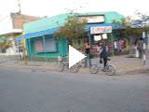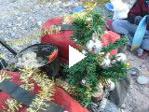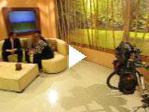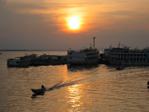After four days biking south along the Chilean coast, I arrived in Santiago, Chile’s capital and largest city. I lived in Santiago for a few months during college (one reason that I seem to speak Spanish), and returned to visit the family that I had stayed with six years earlier.
Chile’s economy, unlike many places in Latin America, has grown impressively over the past decade. There are new buildings, new highways, new busses, and more cars than I remember. There are also new bike lanes, and, amazingly, more bike commuters. I saw a surprising number of people who were middle class biking around Santiago, and met with Arriba e la Chancha, a bike promoting group, who also gave me a plate to put on my bike reading ‘Un Auto Menos’ (One Less Car).
It is summer here, and schools are on vacation, meaning I could give no school presentations. I did the next best thing, though, and was interviewed by channel 13. For those of you who failed to tune into Chilean national TV last week, fortunately, there is YouTube. Click below to watch (Sorry — it’s all in Spanish!)
I also appeared in The Santiago Times, a publication in English, La Nacion, a respected national publication, and La Cuarta, a journal ‘for the masses’ that for some reason, in addition to providing news, always seems to have a picture of an attractive woman on the cover.
Also, if you are in Santiago and need help with your bicycle, I strongly recommend Luis Cabalin at Doctor Bike on Coquimbo 1114 (ph: 698-4193, email cabalin@doctorbike.cl) Definitely one of the best bike mechanics in town.
I stayed in Santiago a long time, spending time with my former host brother and sister, visiting my former academic program, and even climbing a mountain over Santiago. I also stopped by CONAM, Chile’s version of the EPA, and Terram, a local environmental NGO. Thanks again to Juan and Myriam for housing me for so long! (Juan can be seen trying to ride my bike away on the right). I am now headed south through Chile, with only two months of biking left.



















